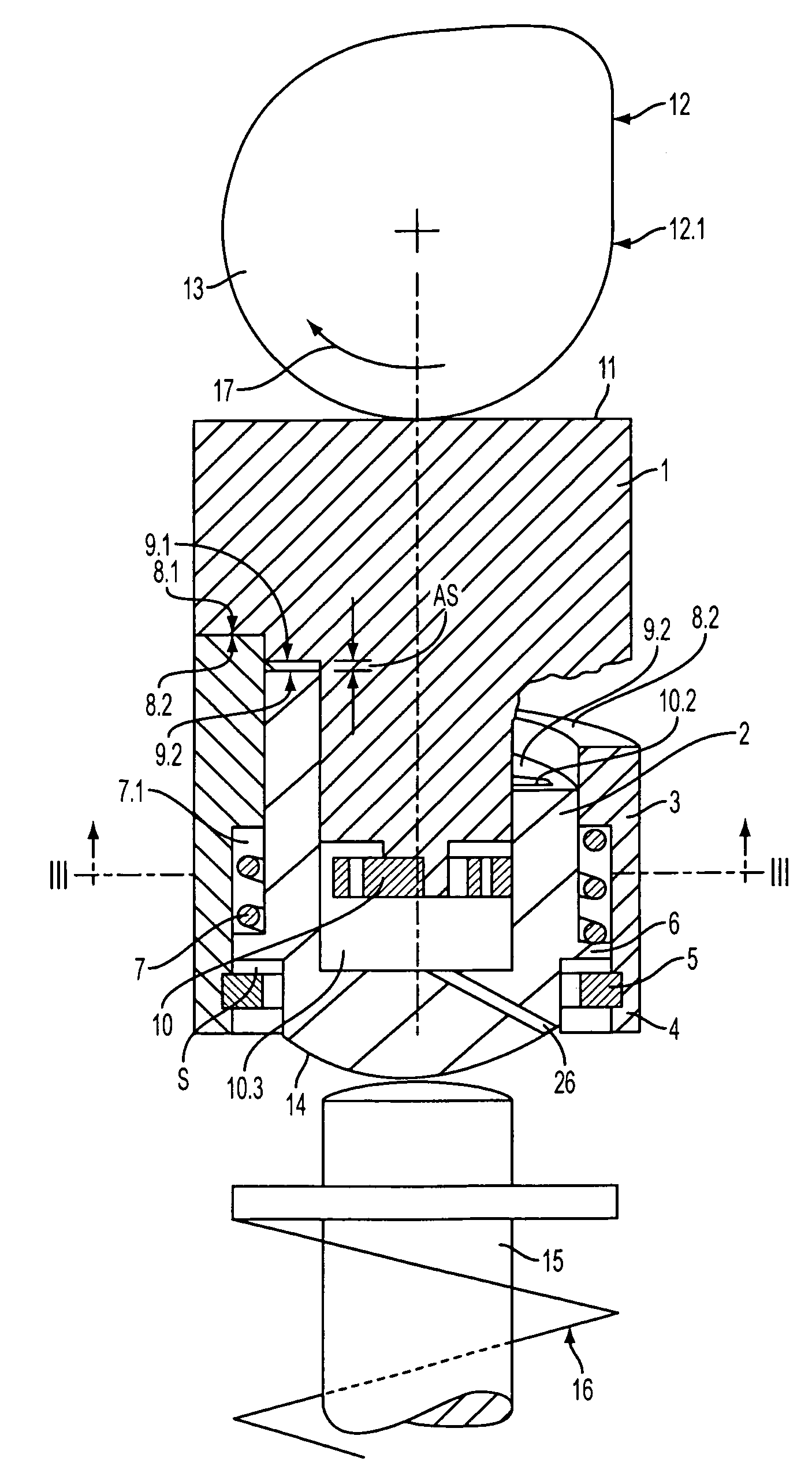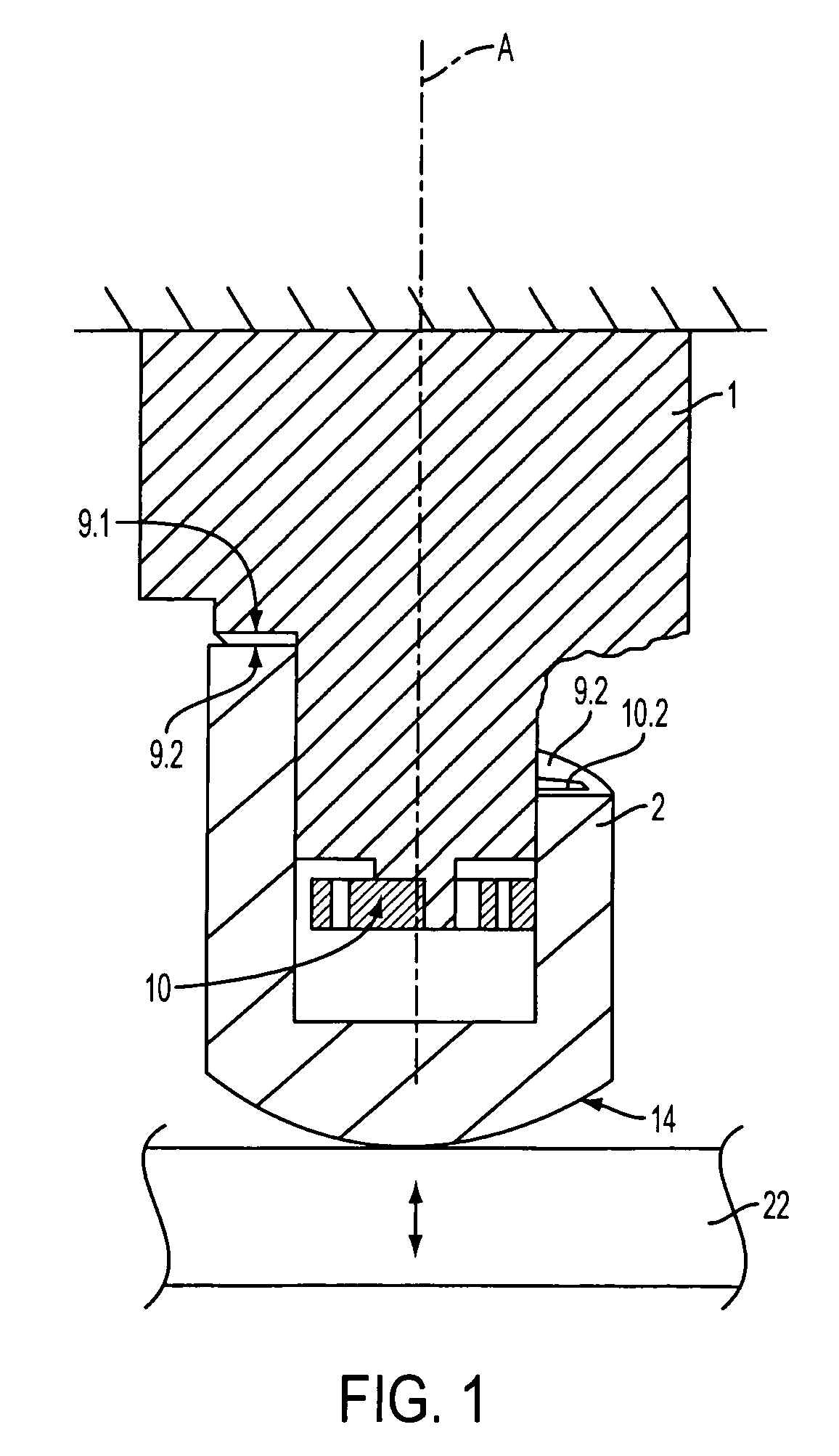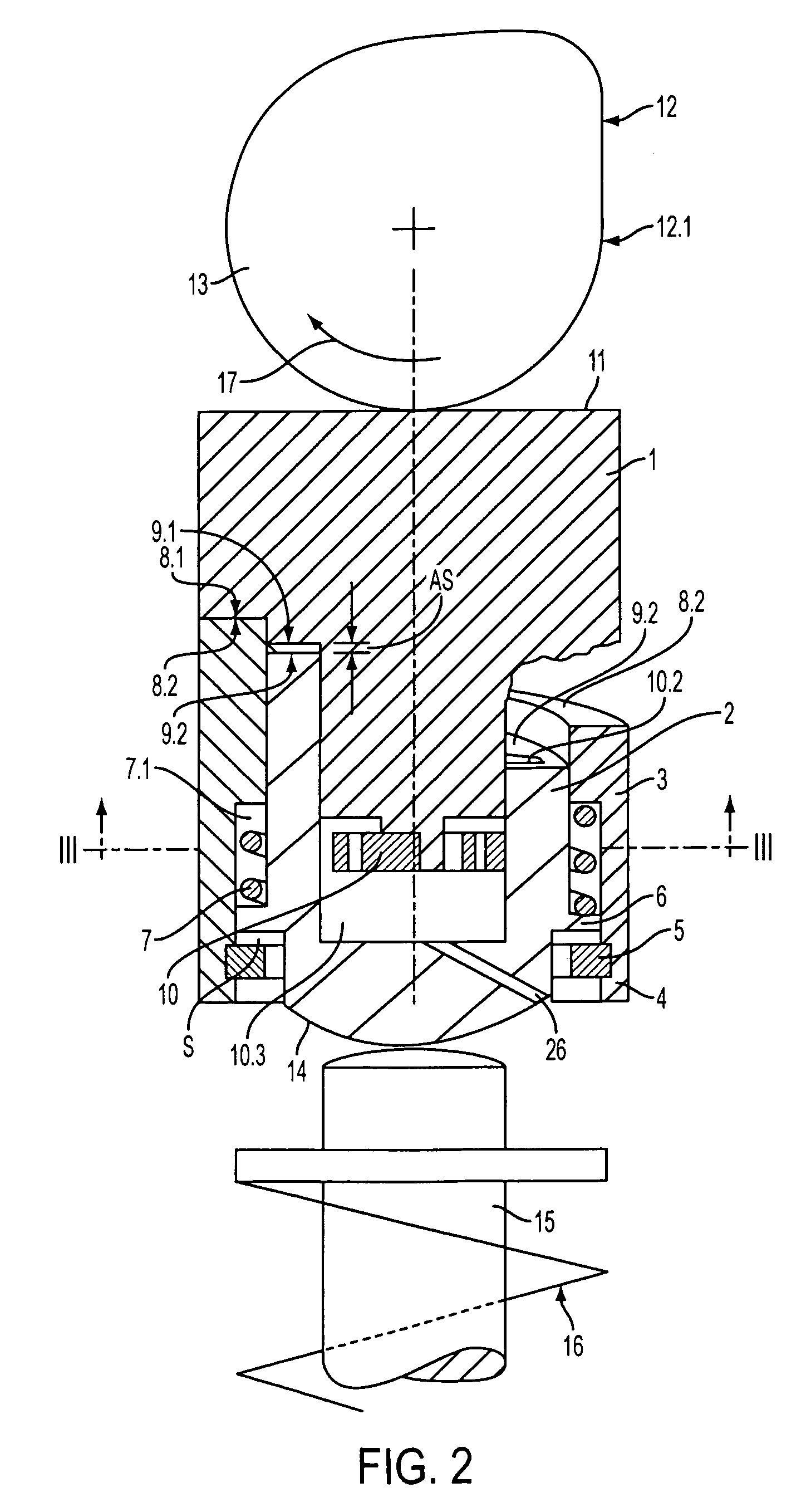Mechanical valve play compensation element for a valve drive on a piston combustion engine
- Summary
- Abstract
- Description
- Claims
- Application Information
AI Technical Summary
Benefits of technology
Problems solved by technology
Method used
Image
Examples
Embodiment Construction
[0027]The schematic illustration of an exemplary embodiment of a mechanical valve play compensation element in FIG. 1 shows a first pressure part 1, embodied for instance in the form of a die or piston, which is axially displaceable relative to a second pressure part 2 and is retained rotatably about the displacement axis A and is embodied as cup-shaped or cylindrical, for instance. The pressure part 2 is braced by its free end 14, for instance on a drag lever 22 to be actuated. The first pressure part 1 is kept stationary, or is connected to a valve drive, depending on the intended use.
[0028]The first pressure part 1 is provided, on its side oriented toward the second pressure part 2, with a helical surface 9.1, with which a corresponding helical surface 9.2 on the second pressure part 2 is associated. The associated helical surfaces form a pair 9 of helical surfaces. Of the helical surfaces 9.1 and 9.2 of the pair 9 of helical surfaces, at least one helical surface is embodied as ...
PUM
 Login to view more
Login to view more Abstract
Description
Claims
Application Information
 Login to view more
Login to view more - R&D Engineer
- R&D Manager
- IP Professional
- Industry Leading Data Capabilities
- Powerful AI technology
- Patent DNA Extraction
Browse by: Latest US Patents, China's latest patents, Technical Efficacy Thesaurus, Application Domain, Technology Topic.
© 2024 PatSnap. All rights reserved.Legal|Privacy policy|Modern Slavery Act Transparency Statement|Sitemap



